Modern Draft Horse
Modern Draft Horse
From The Working Horse Manual
By Diana Zeuner
(Editor, Heavy Horse World)
Introduction
The 20th century saw wild swings in the fortunes of the working horse. From its heyday in the first quarter, when it was the engine of industry in a way which is generally unappreciated, to its decline after the war years, its near disappearance in the 1950s and 1960s and its revival in the 1970s and 1980s, the future of working horses has been at the impulse of man and his inventions. The 1990s can probably be seen as a period of consolidation of those revival years.
Despite recession and the dramatic effects on agriculture of various public health scares affecting the finances of many heavy horse owners, the numbers and activities of draught horses appear to have been maintained. As at other times during the century, the tenacity of individuals and a few organisations have been responsible for the survival of this draught animal in roles which may appear incongruous in the modern age.
As we enter the 21st century, men who worked daily with horses on farms and fields, in towns and cities, in docks and on railways, in factories and yards are passing on – and with them their intimate knowledge of the skills and techniques of horsemanship at its best.
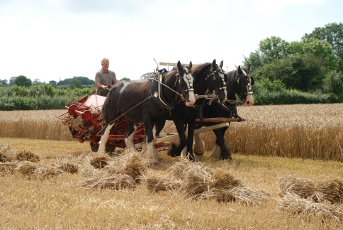
Yet they are being replaced, by younger men and women keen to work with horses whose temperament and usefulness is both endearing and challenging. The most forward thinking of the traditional carters and experienced horsemen are prepared to pass on their knowledge, and there does exist a national training framework through which they can do so, although it is little used. For others, chats over the fence are preferred, and many of today’s younger horsemen and women are pleased to acknowledge their older mentors.
There are fewer modern horsemen than there were of course, and the tasks for which they use their horses are often different to those of the past. The role of the working horse, whether a Shire, a native pony or a working cross, is evolving and changing in response to a changing world.
Great interest is now being shown in developing modern machinery suitable for horse-drawn use. The indomitable machines of the horse age remain in use on smallholdings throughout the UK, but new equipment has been developed for today’s agricultural situations. Some modern machinery has been imported from the USA, Scandinavia and Eastern European countries where horse-drawn equipment continued to evolve during the low point of the draught horse in the UK.
Today’s world of the working horse is a kaleidoscope of activity, albeit specialist and small-scale. From breeding draught horses, through shows, parades, matches and workings, leisure activities, marketing and promotion, to agriculture, horticulture and forestry, each aspect has an important part to play and contributes to a new role for the working horse.
Agriculture and Horticulture
It is always surprising to those unfamiliar with heavy horses to discover that they can still be found working the land on farms, smallholdings and in market gardens. No middle to large-scale commercial farmer is going to reintroduce horses onto his land, but for smaller farms and those who care for natural power and quiet friendship which working with a horse can bring, there is still a place for draught animals. In practice, such a farmer will probably also have a tractor in the yard, but for some tasks a working horse is ideal. Harrowing, rolling, cultivating and carting are all jobs for which the horse is suited on small farms. Horses can carry winter feed out to cattle and sheep, keep pasture in good heart, hoe between vegetable or vine rows and move endless objects about the farm, whether gate posts and fencing wire, or pig arks and troughs.
Such a farmer who ‘thinks horse’ will have no difficulty in running his business substantially, or even completely, by horse, comforted in the knowledge that increasing interest in our natural environment and its protection, particularly among the younger generation, may actually lead to an increase in people like him in the future.
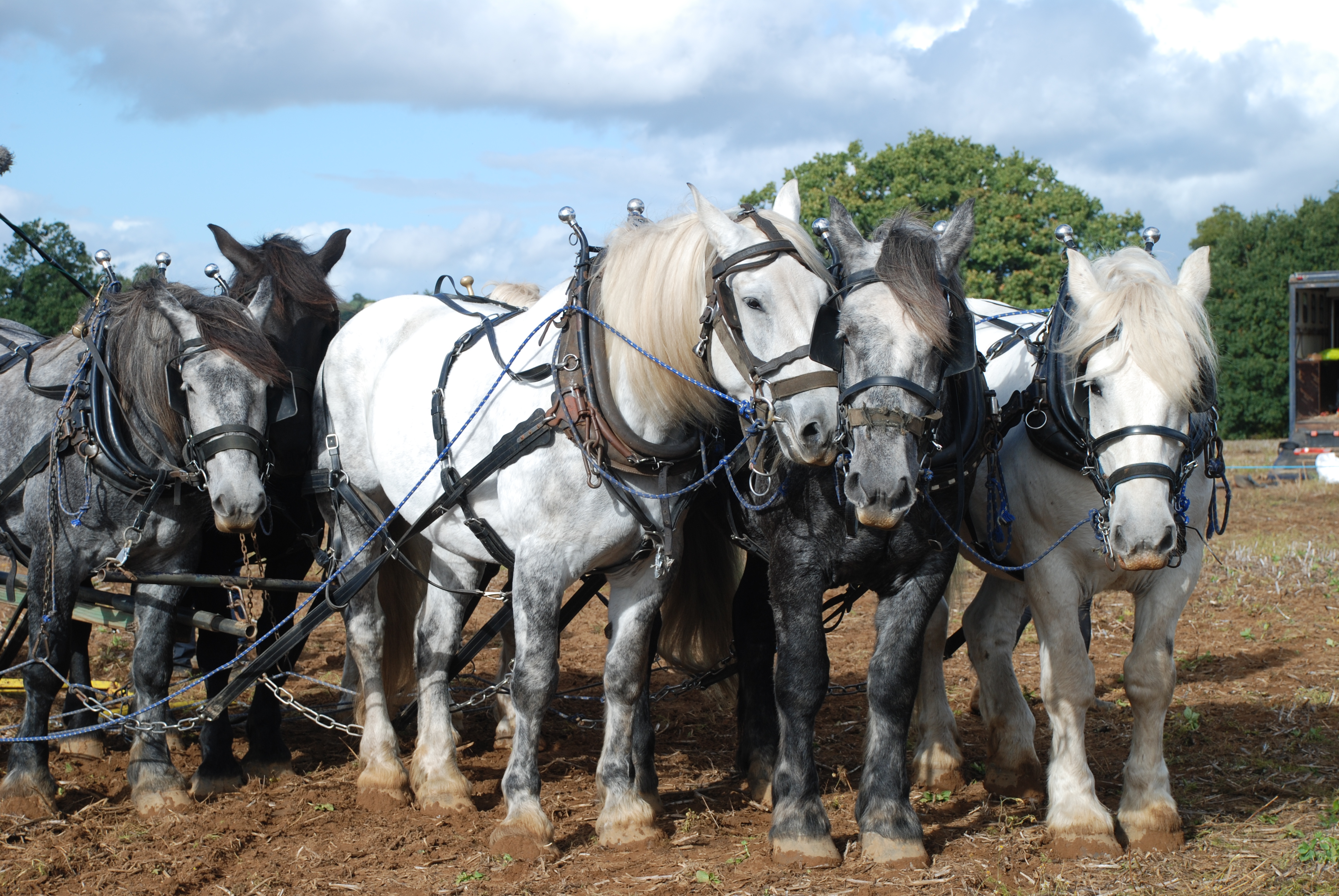
Leisure
Draught horses in leisure have probably been the fastest growing new use during the revival period. Quite apart from the fact that horse owners are often showing and working them in their own leisure time, the interest in heavy horses has led to the opening of several heavy horse centres all over the country. The National Shire Horse Centre in Devon was the market leader. Others mushroomed, until nearly every county had its own heavy horse centre, working farm or rare breeds centre. Museums of rural life, such as those at Beamish, Co Durham; Acton Scott in Shropshire; the Norfolk Rural life Museum at Gressenhall, Norfolk and the Weald and Downland Living Museum in West Sussex also bought heavy horses. At most of these the horses can be seen at work regularly, demonstrating agricultural tasks to their visitors.
Working horses are also in use on the inland waterways system, where they pull barges along canals, on quiet country lanes where they draw ‘gypsy’ caravans for holidaymakers and in attractive countryside where heavy horse owners give rides to paying passengers, perhaps with a pub lunch as part of the experience.
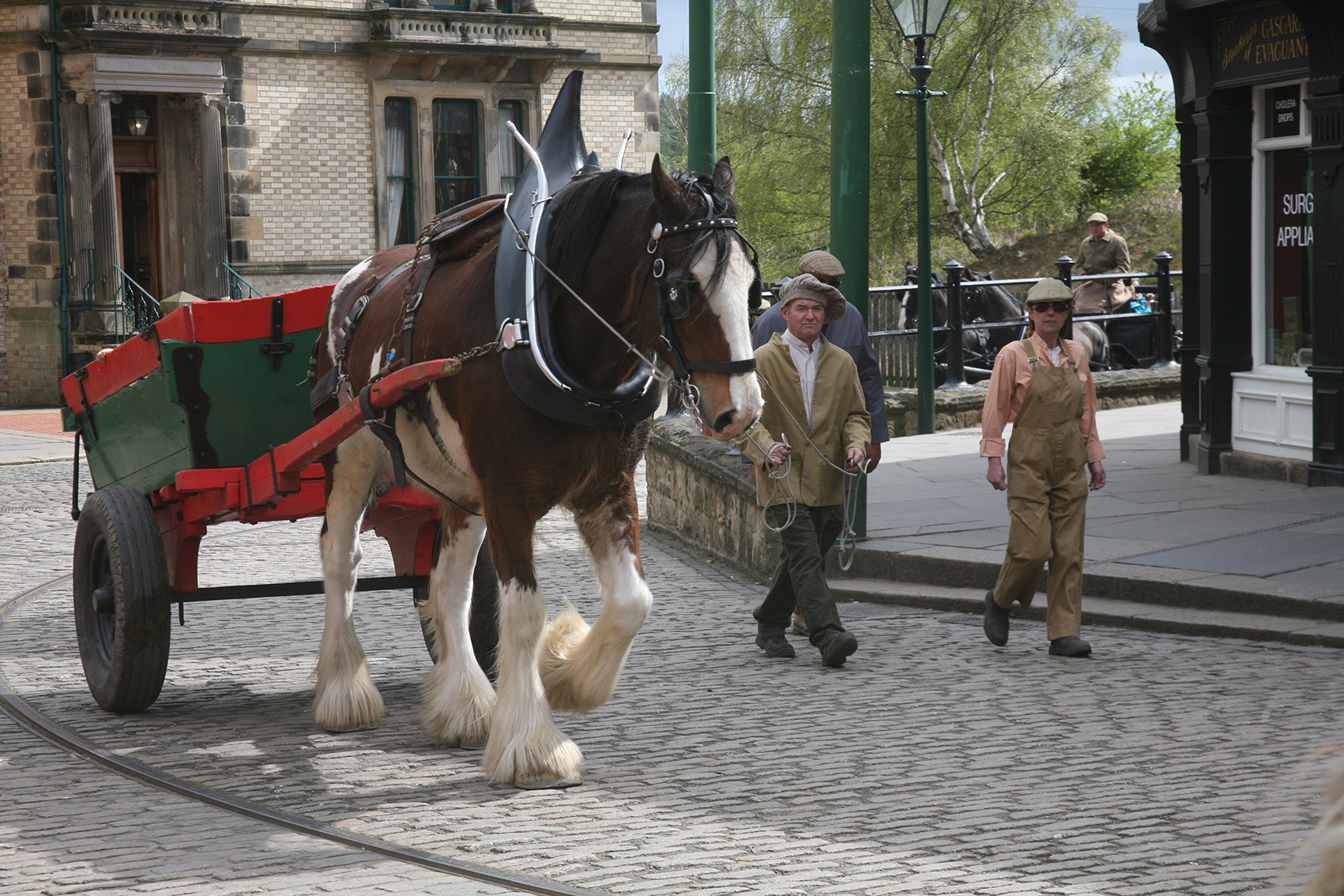
Riding & Two-Wheeled Carts
In the 2010s riding heavy horses became increasingly popular, with many shows and events and the individual breed societies staging ridden heavy horse classes, for pure-breds and sometimes for part-breds. A British Ridden Heavy Horse Society was set up as a focal point for the enthusiastic new heavy horse owners. Among its aims was improving standards of both the riding of heavy horses and the ridden classes themselves. Rules and etiquette were drawn up and in most ridden classes two judges were appointed, one a ride judge who focused on the ability of the horse and rider, and the other a conformation judge, appointed from breed society judges’ panels, to focus on the quality of the horse as a representative of its own breed.
The growth in ridden heavy horses provided breeders with a new market and the breeds themselves with an addition use. Many new owners of heavy horses began by riding their animals, and later became interested in driving their horses and showing in-hand and turnout. This trend at least ensured the continuation of the breeds for their original use – draught. Critics of ridden heavies had to admit the importance of these factors at a time when true working of draught horses appeared to be on the decrease. Some expressed concern that the development of riding would mean narrower, taller horses, a significant move away from the broad-bodied, stout-legged true draught horse.
Another development in this period was the rise of the two-wheeled cart class, often known as ‘ladies cart classes’ or ‘gentlemen’s cart classes’. Based on the stallion carts of north America and Canada, and also the English gigs, these single-horse vehicles provided newcomers with another route into the heavy horse sector, and established owners with a new objective. Compared with the expense of acquiring a dray and show harness for a single or pair, it was relatively cheap to buy a two-wheeled cart, often imported from north America or Europe, and to adapt English harness or purchase American harness, and gave single horses who might otherwise be under-used an additional purpose. Rules and standards for these classes were also developed.
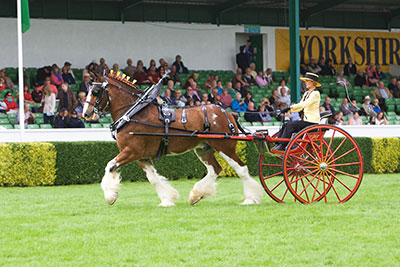
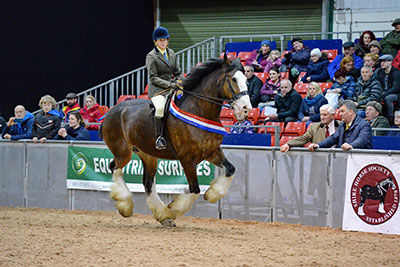
Marketing and Promotion
A vital aspect of the heavy horse’s revival was the part the horses themselves played in marketing and promotion. The breweries, which had continued to use them for beer deliveries in towns, led the way, with their heavy horse operations becoming part of their public relations departments. Their appearance in their smart drays in London and other towns where breweries were found publicised the breweries products and drew attention to the majestic nature of the animals themselves. Whitbreads, Youngs, Ind Coope, Fullers, Joshua Tetley, Vaux, Thwaites, Samuel Smith’s to name only a few, have also set the standard by which heavy horse turnouts are to be judged. Sadly, economies have forced a reduction in heavy horse operations, and their activity has been curtailed.
Other companies joined the breweries in making use of heavy horses for marketing and promotion, appearing at shows, in parades and in towns where they were perceived to be beneficial to the sales of their product or service. Rather than run their own teams they have contracted-out the heavy horse operation, a factor which has helped the few professional heavy horse businesses which exist.
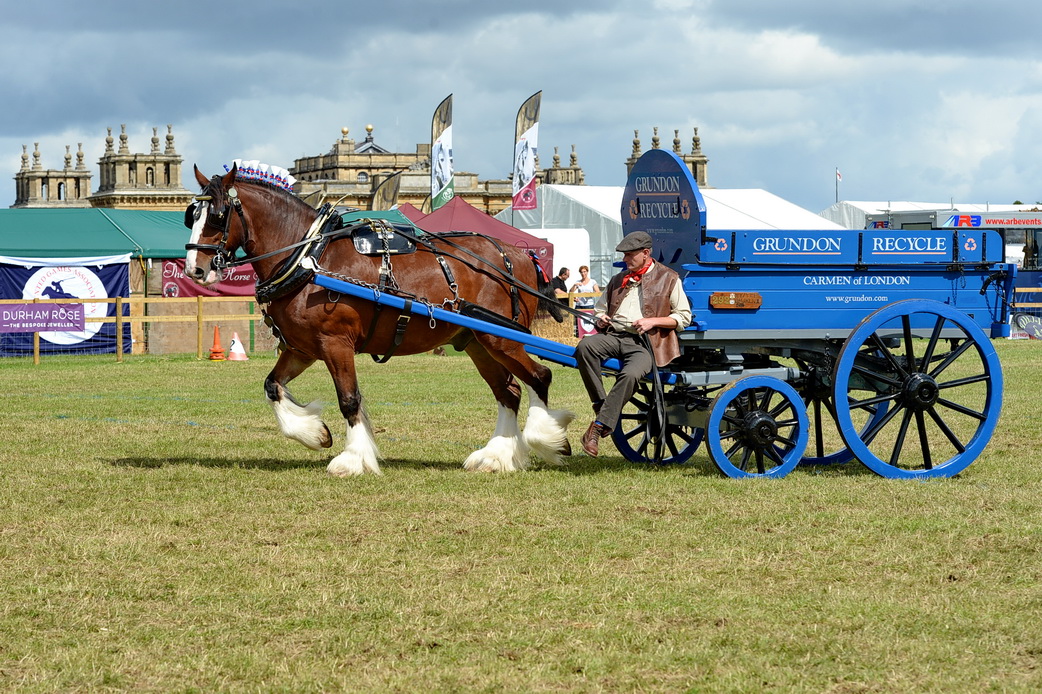
Public Authorities
Far-sighted local authorities saw the potential of heavy horses on their streets as the revival gathered pace. The city of Aberdeen led the way, with other authorities joining them in running teams of horses in a variety of tasks, such as park maintenance, rubbish clearance, plant watering in town centres and promotion. The public preferred them to polluting lorries and felt that their local authority was being environmentally conscious while at the same time helping the cause of heavy horses. Local authorities also introduced heavy horses at city farms.
Other public authorities such as the Royal Parks took on heavy horses for tasks such as timber and grounds clearance, harrowing rides and general promotion.
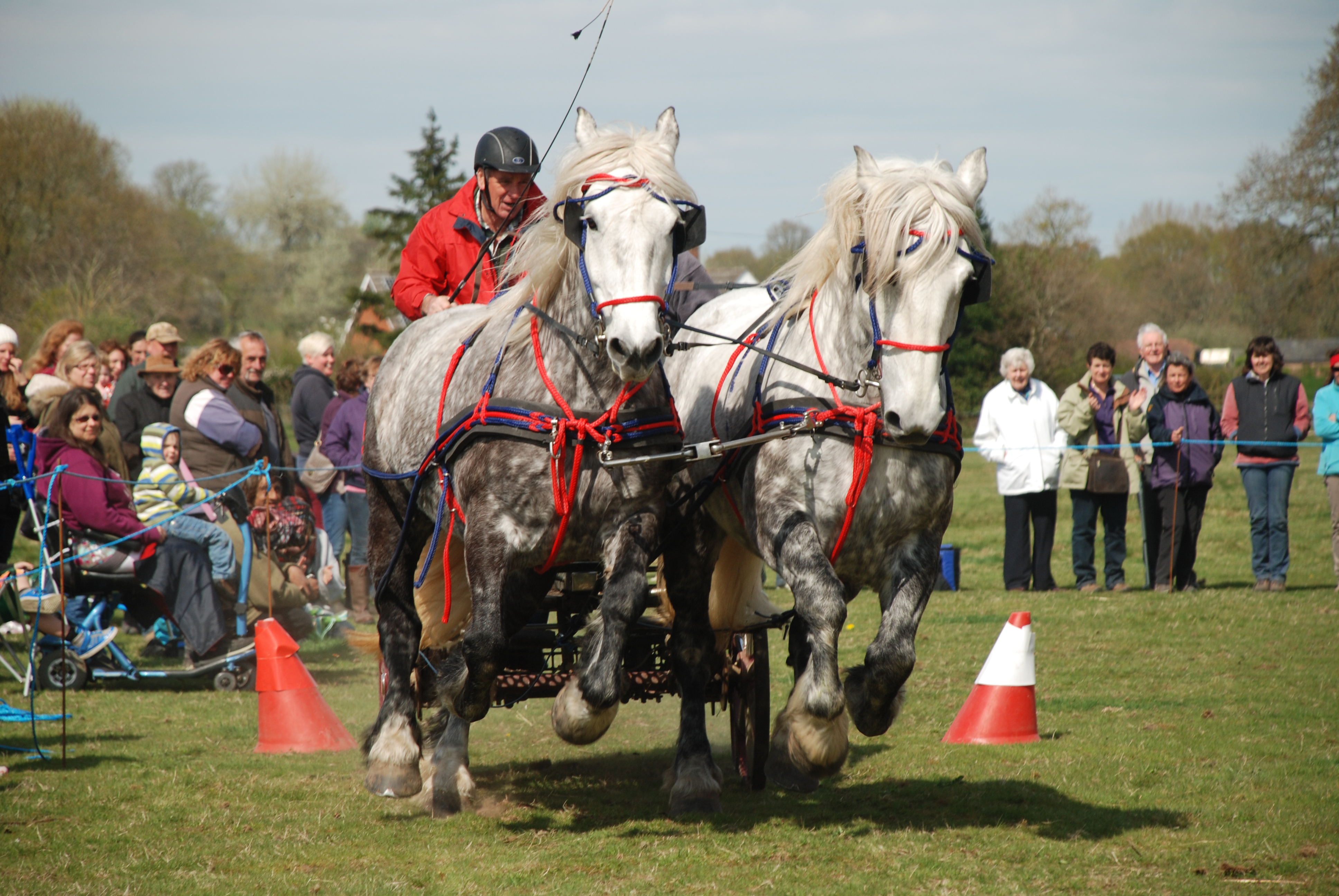
Other Activities
Heavy horse owners have become adept at finding all sorts of uses for their animals and their own enjoyment. Many provide their horse and wagon for weddings, join in with local carnivals and appear at village fetes. Some have provided horsepower to harrow sports grounds, where this natural alternative to the tractor does much less damage. Others are engaged in harrowing riverbeds for their local water and environment agencies to refresh stale fish breeding grounds. Many of these ‘new uses’ are adaptations of what used to happen, and no doubt fresh activities will continue to be found.
Breeding
The breeding of pedigree draught horses remains predominantly in the hands of those who saved them during the 1950s and 1960s and their successors, very often sons and daughters. Yet the traditional ways, which are still important, are giving ground to modern techniques. Greater mobility within the UK means that mare owners are prepared to travel many miles to a suitable, or fashionable, stallion. Stallions once ‘walked’ to mares at local farms, but now they stand at stud either with their owner or with a society, which hires them for a season. Other stallions, not of championship quality but sound in all other aspects, are probably just as good a sire for most mares, and worth some research before they are rejected. Appropriate stallions can best be found through the secretaries of the various breed societies, which receive financial assistance towards breeding programmes from the Horserace Betting Levy Board.
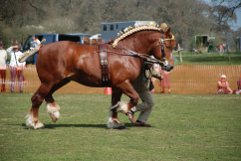
However, breeding horizons are widening rapidly and AI (artificial insemination) coupled with chilled or frozen semen means that a stallion in eastern Lincolnshire can father a colt of filly in the USA or Australia. The skills and techniques involved in collecting semen, sorting it and transporting it are being refined all the time, and increasing numbers of people in the draught horse world internationally are prepared to pay the comparatively high costs of this new breeding system. For a Shire horse owner in Australia it is vital to encourage diversity in breed lines. For a British stallion owner it can be useful income. Exporting genes overseas in this way can sustain a line which has become rare, or even extinct in it’s home country. Others point out that it can have the effect of encouraging widespread use of genes from a very few popular stallions, thereby reducing the gene pool rather than widening it. Breeding pedigree draught horses has its limitations. Demand for them is not high, prices are sometimes low and a future as a meat animal is all that some young stock can expect. Yet committed new breeders are important, particularly to those breeds with small numbers, such as the Suffolk. Breeding strategies are complex, and one contemplating serious breeding is we advised to contact the appropriate breed society.
Crossbreeding is also an important element for the breeders of both stallions and mares to bear in mind. A crossbred animal can be useful to a wider sector of the population, perhaps as a heavy hunter, a driving horse for leisure use, or for general hacking. Crossing can be an important source of income for the breeder.
In the show ring judges of all pedigree breeds are looking for certain conformation characteristics. In some breeds this has changed considerably in recent years. The modern Shire is taller, less feathered on the leg, has a narrower chest and less bone than its predecessor, partly through cross breeding with the Clydesdale, and partly as a result of greater demand as a driven draught horse in dray teams and for promotional purposes. Height and silky feathers have given both these breeds a majesty, which is attractive, not least to the new European enthusiasts. Some would claim the Suffolk has been bred too tall, compared with its sometimes shorter draught ancestors. Whilst a tall animal is dramatic in shows, parades and promotions, a shorter, compact, more heavily built animal with a broad chest is necessary for ‘real’ agricultural draught work in timber extraction.
Both types have their place in the modern draught horse world and breeders need to provide both sorts for the market. Judges at shows should acknowledge the qualities of both. In practice, breeders tend to concentrate on one type or another. Judging tends to favour those being produced for promotional purposes.
Exports of pedigree draught horses increased in the 1970s and 1980s. Clydesdale breeders were very successful at selling to Canada, the USA and Australia in particular. Some concern is expressed that many of the best animals go overseas. The Shire found a new market in Europe, Germany, France and the Netherlands especially. In these countries new societies have been established which are affiliated to the mother society in Britain. The USA continues to import Shires including some notable champion stallions.
The Rare Breeds Survival Trust (RBST) monitors the fortunes of the breeds. The Suffolk is on the priority list in category 1 (critical), and has some 80 breeding females. The Clydesdale is in category 4 (at risk). The Shire remains the most numerous of the heavy breeds, staying off the priority list, but included among minority breeds, being constantly monitored. Economic factors could easily shift it into the priority category however, and some, especially its American supporters, believe that its numbers are sufficiently low to cause concern. Other horses and ponies on the RBST priority or minority lists are the Cleveland Bay, Eriskay, Exmoor, Dales, Irish Draught and Fell, all of which were traditionally used for draught work in their native regions. The British Percheron, while not a native breed, is given financial help towards breeding programmes by the Horserace Betting Levy Board, on the basis that its breeding statistics are comparable to those on the RBST list. Fortunately its relationship with its relatively numerous French cousins gives it stability.
Shows, Parades, Ploughing Matches and Workings
Agricultural and specialist heavy horse shows, town parades, ploughing matches and workings present the public face of working horses. Here, those newly interested in working horses can collect much information, both visual and verbal, by watching proceedings and chatting with horse owners. Heavy horses can be seen at some 250 shows and events annually all over the country. The smaller local shows make an excellent introduction for anyone wanting to show their horse in hand or with a vehicle, although the number of parades (previously at Battersea, Portsmouth and Burton-on-Trent) have reduced.
Ploughing matches had virtually ceased by the 1950s and 1960s, but were revived by horsemen determined to keep the skills of the ploughman alive. The leader in the field was the Southern Counties Heavy Horse Association (SCHHA), which began as a ploughing association in the early 1970s, and whose rules, form the basis of many matches all over England today. The Associations Great All England Ploughing Match is the largest horses-only ploughing match in the country. Classes for novices are also held.
Workings have also increased in number, especially since the growth of working horse associations. These exist now in the southern, western, eastern, midland and northern counties, all brought together under the umbrella of a federation. Their aim is to encourage the working of draught horses and to enable members to meet together for camaraderie and practical horsemanship. Their less competitive nature, the fact that they allow the cultivation of suitable fields in the company of like-minded people and the variety of activities which they have encouraged have made them a great success.
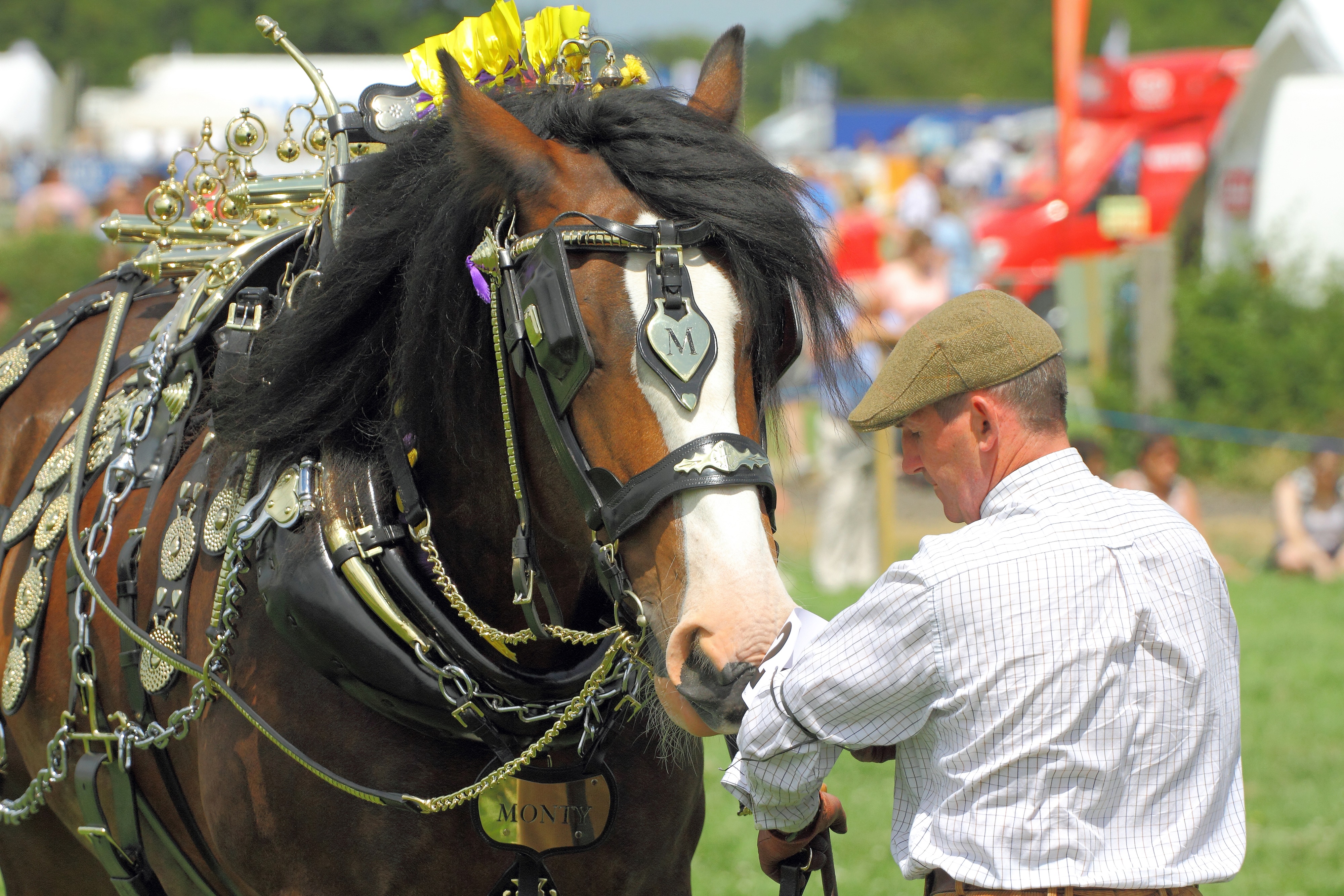
Skill Tests, Obstacle Driving, Timber Snigging and Cross-country trials
At shows, matches and workings several new activities have been introduced over the last 20 years designed to demonstrate the versatility and usefulness of the working horse and to enable their owners to have fun. An added impetus was the Shire Horse Society project history with a future (1995-1988), which was designed to highlight ways in which the draught horse could be used in the future. Obstacle driving and timber snigging, in particular, developed from ideas explored during the project.
Obstacle driving involves a single horse or pair of horses driving through a course of cones accurately against the clock. Heats of a national competition take place at different shows throughout the year, culminating in a championship. Competitors tend to be drawn from show turnout enthusiasts.
Timber snigging is more likely to be found at a working and involves a horse being driven through a course of cones, dragging a log, without touching the cones and against the clock. Considerable skill is necessary to achieve a competent round, but it is a highly suitable activity for people relatively new to heavy horses.
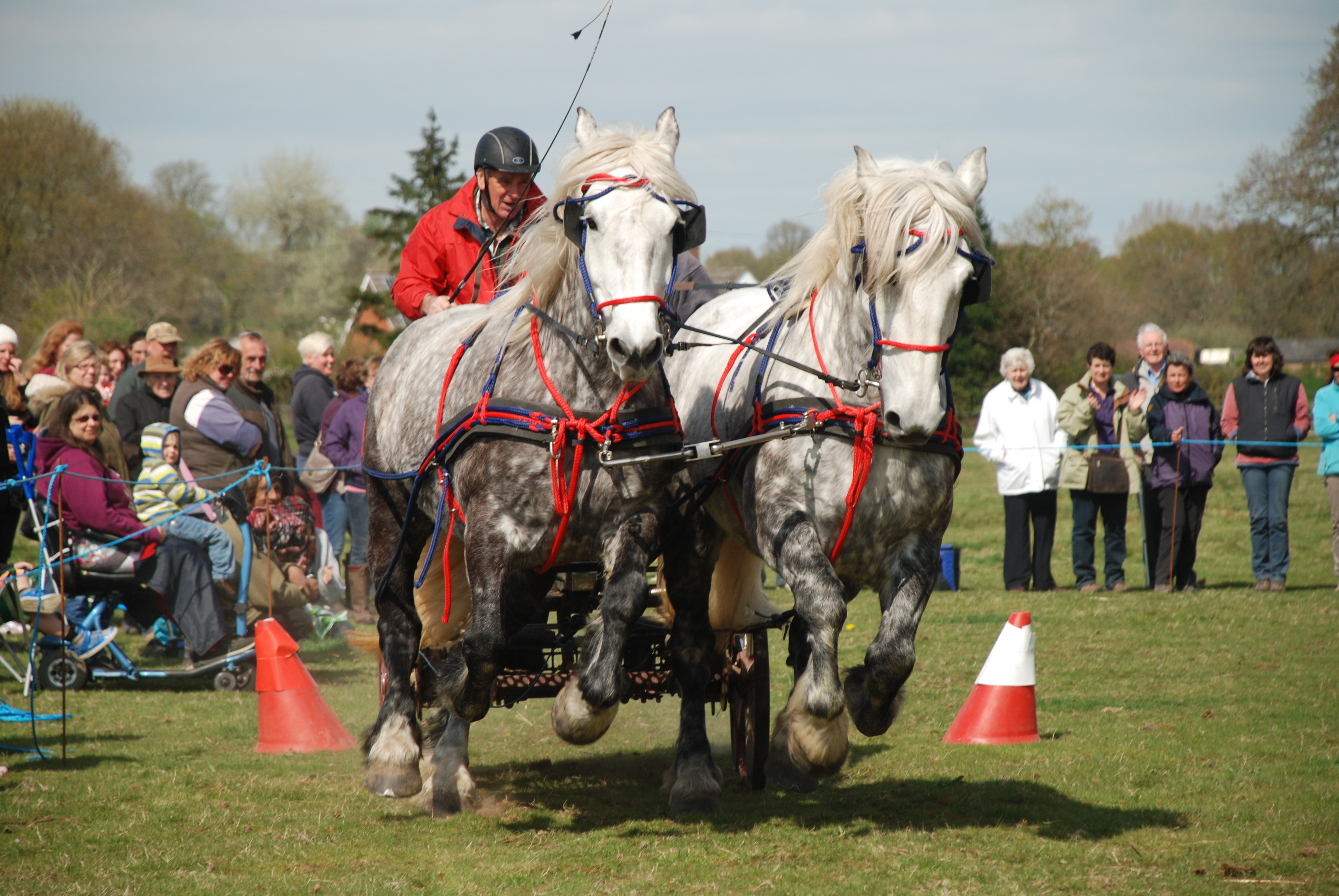
Forestry
Timber extraction by horse has been the surprising growth area in the use of working horses in the UK over the last 20 years. From a handful of people in the early 1970s, this activity has grown until the new British Horse Loggers Association was subsumed into the larger, professional Forestry Contractors Association in the mid 1990s – the clearest indication that horses were accepted by the Forestry Industry. Prior to that, the forestry authority had carried out technical research surveys into the production levels of horse-drawn extraction operations and found in their favour. Where environmentally sensitive ground, conservation areas or steep slopes were involved, horses were economically sound. Their production levels were less than those of modern machines, but not drastically so. While machinery could still do the job, the damage to the forest floor was unacceptable – the imprint of hooves and dragged timber was negligible in comparison.
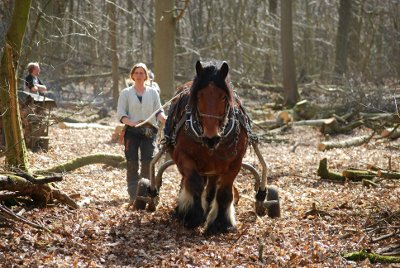
In addition to the Forestry Authority, the National Trust, Countryside Commission and individual landowners took a serious interest in the use of horses in forestry, sealing its acceptance and putting it on a commercially viable footing.
A number of horsemen used to agricultural work began extracting timber as part of their living, a few eventually turning to work full-time. Some foresters were prepared to turn away from machines to horses – an important factor, since a knowledge of forestry is vital to horse operations in woodland. Courses encouraged the safe efficient practice of horse extraction using horses. There are now some 70 professional or part-professional horse loggers working throughout Britain.
If you enjoyed reading this extract, why not take a look at the full manual?